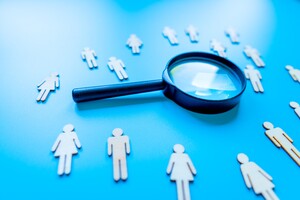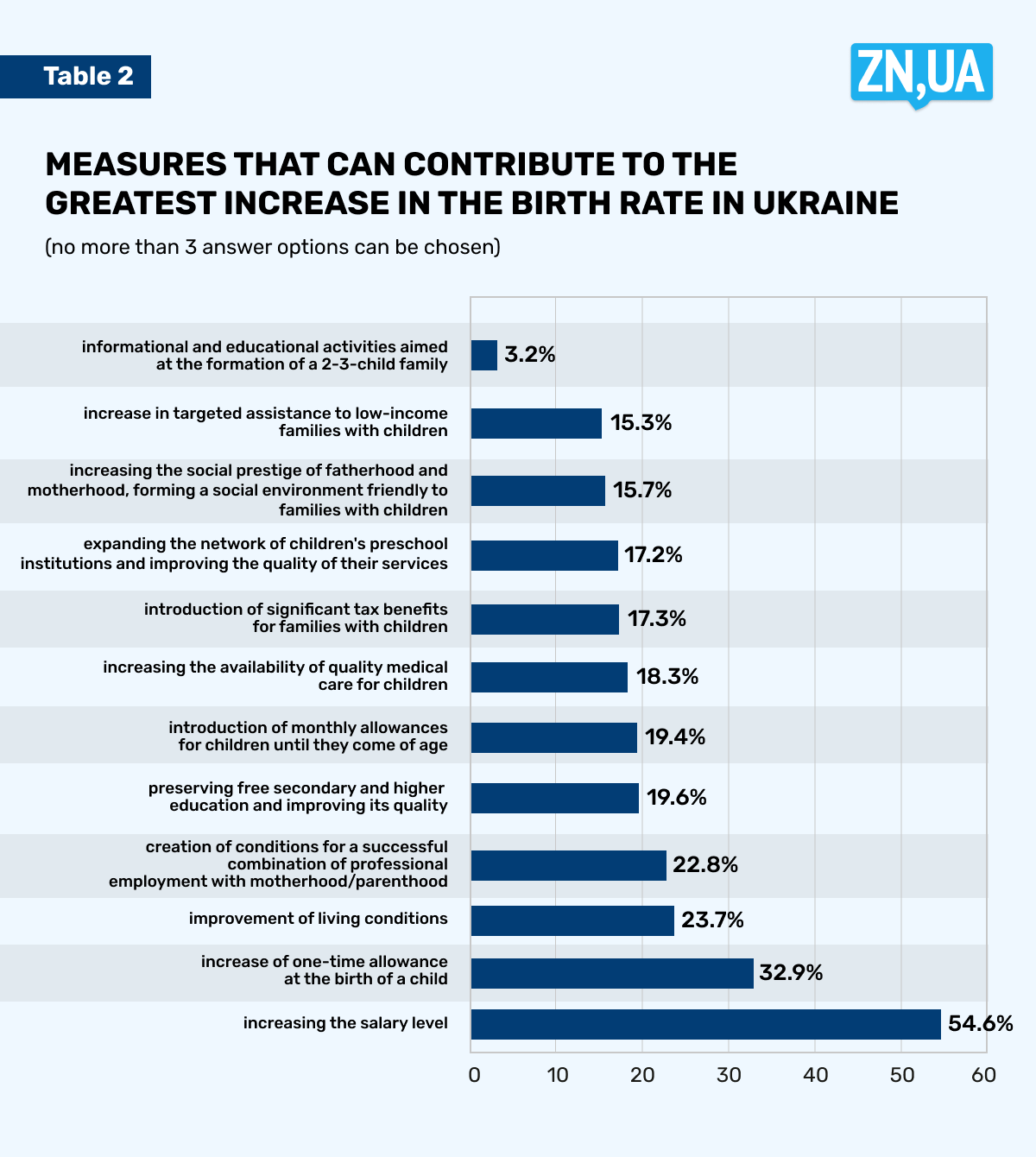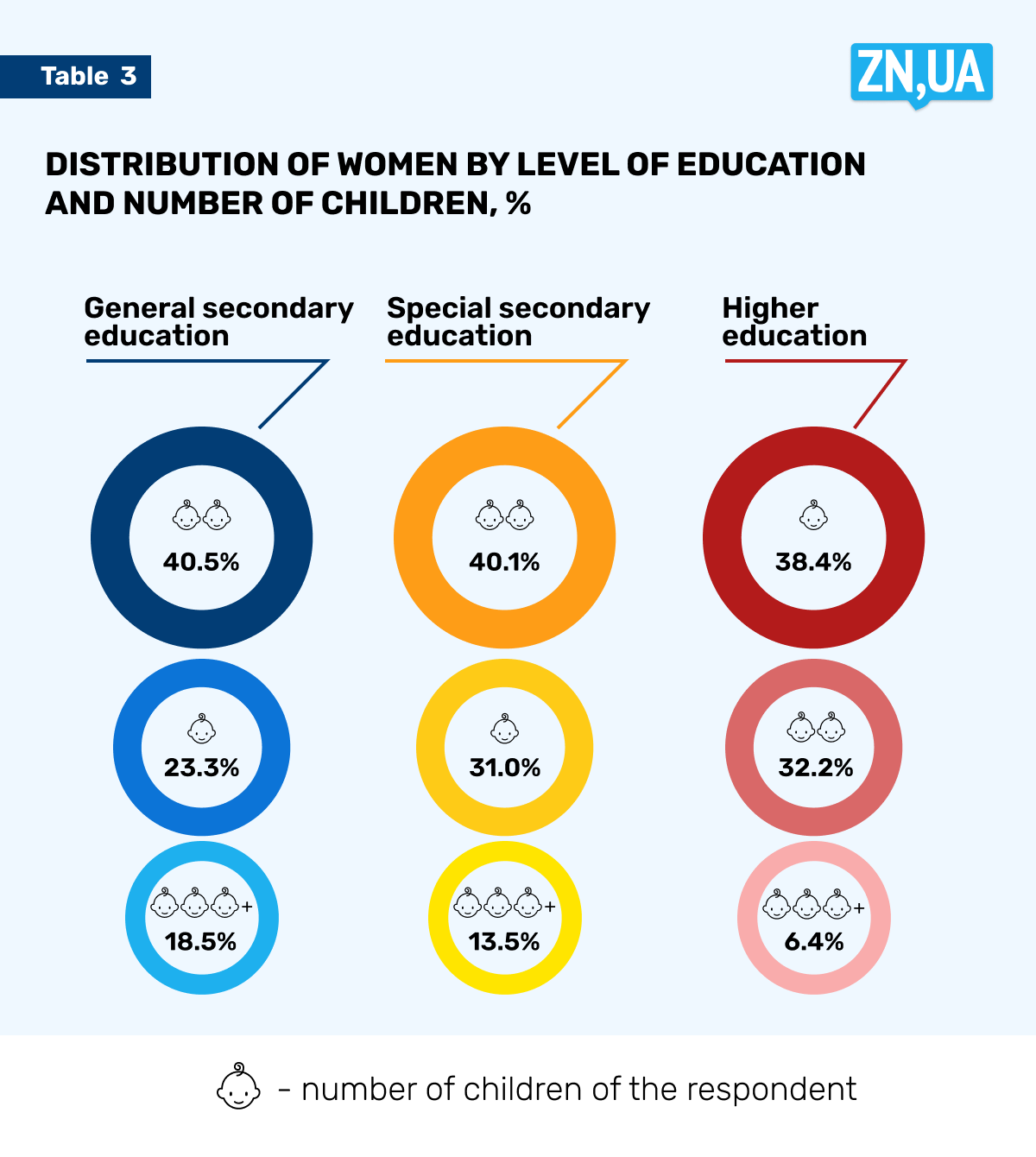Birth rate in Ukraine: what has changed and what will change after the Victory

There is no doubt that the Russian aggression not only caused a colossal destruction of the infrastructure and the economy in general, but also caused huge demographic losses to Ukraine. At this time, we cannot accurately determine the scale of the incredible level of mortality that affected both soldiers and civilians. Somewhat more reliable is information about the scale of Ukrainians leaving abroad, primarily those Ukrainians who voluntarily went abroad, and those citizens of Ukraine who were forcibly deported to Russia. The data on the birth rate are also not absolutely accurate.
It is clear that the main gaps in the information field are caused by the inaccuracy of data on territories temporarily occupied by the enemy, as well as on those where active hostilities are taking place and on those adjacent to them. Statistical accounting in conditions of war inevitably suffers. We only have various estimates, which in one way or another are based on the so-called big data, in particular on the data of mobile operators, appropriately adjusted for the presence of two or three SIM cards in one part of the population and the absence of them in the other.
Thus, according to the calculations of the Institute of Demography and Social Studies named after M. V. Ptoukha of the National Academy of Sciences of Ukraine, as of the beginning of 2023, there were 37.6 million people on the territory of Ukraine within the borders of 1991. While there were 31.6 million people in the territory controlled by the Ukrainian authorities. The main driver of demographic dynamics is, and most likely will remain for the next decade, external migration, which will determine both the number and composition (gender, age, education, etc.), and the location of the population on the territory of Ukraine.
Currently, according to estimates based on the information of the Eurostat on the number of Ukrainians registered in the countries of the European Union as persons under temporary protection and on the results of the Office of the United Nations High Commissioner for Refugees regarding Ukrainians who came to Russia during and as a result of the war, and certain countries outside these borders, it was established that in total there were about 6.4 million people outside Ukraine: in the countries of the European Union as of August 31, 2023 – 4.2 million Ukrainians (1.2 million – in Germany, 1.0 million – in Poland, 0.4 million – in the Czech Republic), 1.2 million – in the Russian Federation, and more than 1.0 million – in other countries. Another 2.5–3 million people moved abroad even before the war in the status of migrant workers or permanent residents. According to various options for birth rate, death rate and, most importantly, migration, it can be expected that the population of Ukraine within the borders of 1991 will be 26–35 million people. The amplitude is undoubtedly very large, but the differentiation of the hypotheses of the main demographic processes is also large.
Against this background, it is worth focusing on the birth rate, its determinants and possibilities for regulation. The birth rate in Ukraine, as in all European and economically developed countries outside our continent, has long not provided even a simple numerical replacement of the generation of parents by the generation of children, and, accordingly, each successive generation becomes smaller than the previous one. Thus, at current levels of infant, toddler and adolescent mortality, the average woman would have to give birth to 2.15 children in her lifetime to ensure this replacement. In Ukraine, such an indicator has not been observed since the 1960s.
According to the data of the Eurostat, the total fertility rate in 2021 was 1.53 on average across the 27 countries of the European Union; the highest value was observed in the Czech Republic (1.83), the lowest (1.19) in Spain. In Ukraine, according to the State Statistics Service of Ukraine, in 2021 this indicator was equal to 1.16. After the start of the war, the total birth rate fell: according to the calculations of the Institute of Demography and Social Studies named after M. V. Ptoukha of the National Academy of Sciences of Ukraine, it will reach 1.0 in 2022, and it is expected to be even lower in 2023. Such a fall is quite natural for the conditions of wartime, and the question is how quickly it will be possible to restore it after the Victory of Ukraine and to what level.
Given that childbirth is less and less a spontaneous event, the identification of instruments of influence must be based on both proven cause-and-effect relationships and the attitude of the population. Contrary to the results of numerous studies carried out in different countries at different times, the vast majority of people are convinced of the possibility of a fairly rapid increase in the birth rate to the desired level solely due to the increase in welfare. In fact, the birth rate trends – and this is irrefutably proven by world experience – are regulated by a much larger number of factors, which, moreover, have a multidirectional impact, different at different stages of development. This fully applies to the connection between the birth rate and the standard of living. Yes, it has long been proven that the birth rate is generally higher in poor countries and in poor families.
But what to do with unshakable convictions that the material factor has priority in the matter of the decision regarding the birth of a child?
An analysis of the opinions of Ukrainians regarding the factors that can most contribute to increasing the birth rate, based on the results of a survey of 2019 respondents aged 18 and older, conducted by the sociological service of the Razumkov Center from September 28 to October 4, 2023, makes it possible to build such a ranked series (see Fig. 1).
It is noticeable that although Ukrainians consider the increase in the standard of living to be critically important for making a decision about having a child, the primary importance is not the increase in social transfers, but the increase in the salary level. This indicates that the majority of respondents will shift their emphasis from paternalism and from expectations of state financial assistance to the possibility of earning money independently without relying on state support. Presumably, a significant increase in salaries will contribute to a further decrease in the value of social assistance, although it is present in the policy of almost all developed countries of the world.
It is worth repeating this extremely important thesis: both the size and duration of child birth financial assistance, the introduction of significant tax benefits for families with children, and the increase in targeted assistance for families with children are important for respondents, but their importance is significantly inferior to the role of salary.
However, attention should be paid to the significant increase in the importance of social transfers for respondents who have two or three or more children (see Table 1). To a certain extent, this indicates that for the birth of the second, third, and fourth child, the size and duration of the social transfer are of much greater importance than in making a decision regarding the birth of the first child. Given the fact that Ukraine seeks to encourage families to give birth to a second and third child, the specified features should be taken into account.
It is worth noting that both world and Ukrainian experience shows a rather short-term (within three to four years) effect of the introduction/increase of financial assistance at the birth of a child. When evaluating it, it should be borne in mind that during the last 1-2 years before the implementation of this measure in practice (and the authorities always widely inform the population about this kind of action), a significant number of families deliberately postpone the already planned birth of a child. After 3-4 years, the birth rate decreases again, and to maintain the same result, the amount of the payment must be increased. However, the size of the grant is limited, not only by budget resources, but also by the size of the salary, since the only social transfer that can exceed the salary is assistance to persons with disabilities. In this sense, it seems more reasonable to increase the duration of child support from the current 3 to 18 years.
Regarding tax benefits, which are a very common and effective tool for supporting families with children in developed countries, their low attractiveness in the eyes of Ukrainians is most likely related to the low level of salaries. After all, the amount of taxes, especially in the conditions of a progressive tax scale, has much more importance for people and families with high salaries. Therefore, the introduction of progressive taxation, which is discussed from time to time, as well as the expected increase in the level of salaries in post-war Ukraine, will require increased attention to this tool of increasing the birth rate.
There are no significant differences in the attitude of Ukrainians to the main levers of increasing the birth rate, neither by gender, nor by age, nor by education, nor by place of residence, nor by wealth. At present, it is difficult to determine to what extent these views are influenced by the war and the reevaluation of values caused by it, how these priorities will be transformed after the Victory of Ukraine. But already now it is possible to confidently state their presence, which should become the basis for further policy development aimed at increasing the birth rate in our country.
It is very important that, determining the main, in their opinion, instruments of state policy, 22.8% of Ukrainians pay attention to the presence of conditions for successfully combining professional employment with motherhood/parenthood. And this, together with the importance of expanding the network of children's preschools, which was pointed out by 17.3% of the respondents, indicates a readiness for active economic activity, which is so important in the conditions of an almost inevitable labor shortage in post-war Ukraine. Persons with higher education attach more importance to these factors, who, in turn, are naturally less oriented to intra-family activities. By the way, the comparison of the number of children among women with general secondary, secondary special and higher education is not in favor of educated mothers (see Table 2). If 23.3% of women with general secondary education have one child, then among those with higher education, 38.4% of women have one child. On the other hand, 18.5% of women with general secondary education and only 6.4% of women with higher education have many children. At the same time, it is precisely among women aged 18-49 with higher education that there is a greater share of those who plan to have a child in the future.
The dependence of the number of children on the father's level of education is similar (12.0% of men with general secondary education and 6.6% with higher education have many children). So, the decision to have a child certainly depends on the level of education, but almost equally on the education of the mother and the education of the father. Of course, such a connection should not result in a decision about the impracticality of obtaining higher educational training for Ukrainian youth.
Restoring the social infrastructure (housing, education, medical) is very important for all interviewees, which also indirectly indicates a conscious attitude to their parental responsibilities.
The vast majority (almost 86%) of respondents of reproductive age (18–49 years) even in war conditions have an idea about their childbearing intentions. This indicates that the birth of a child is becoming more and more a planned event, rather than an accidental one. And for a significant part of these respondents, the continuation of the war, as they say, will not become an obstacle in the birth of a child. That is, you can count on the fact that children will be born in Ukraine even during the tense phase of the war, although there will be few of them.
At the same time, the presence of plans for the birth of children in the future, which indicates a conscious and responsible attitude to the birth of a child, overrides the expectations of the baby boom after the Victory of Ukraine. Rather, it is possible to count on a certain compensatory increase in the birth rate associated with the achievement of the standards of the level and quality of life defined, primarily by young people. In total, 35.7% of respondents who are potentially capable of having children have plans to give birth to a child, although it is mostly about the birth of the first child. Only 30% of respondents who have one child are determined to have at least one more. Among those who already have two children, only 8.7% were Ukrainians, and among those with many children, only 5.7% of respondents were identified.
After the Victory, Ukraine will simultaneously solve a whole range of tasks aimed at improving the demographic situation, improving the quality parameters of human capital, compensating for the inevitable depopulation, and ensuring the needs of the economy in a properly qualified workforce. Just as there are no magic pills for all diseases, there are no simple solutions to complex problems, including demographic ones. We have to implement a number of interconnected measures of a general and local nature, which in their totality will ensure an increase in the quality of life in the country, but their eclectic application may not only not give a synergistic effect, but may even cause undesirable results. The absolutely undeniable need to increase the birth rate is connected with changing the guidelines, especially for young people, and creating conditions under which spouses can implement these guidelines. But if a young mother is forced (for example, due to the unavailability of children's preschool and after-school facilities) to leave the labor market for a long time, then this will not only reduce the already limited labor supply, but also oppose the formation of guidelines for the birth of a second or third child. At least married couples with higher education may face such a situation.
As it follows from the results of the survey, the general support of the family, in particular through social transfers, is important for the formation of such guidelines. Moreover, not only the size, but also the duration of assistance is important. Under the conditions of the introduction of progressive taxation and/or a significant increase in salaries, benefits for families with children will play an extremely important role. The improvement of housing conditions, relevant for young people even before the start of the war, became much more important due to large-scale destruction. However, this task, as, by the way, and many others, requires different solution tools. Thus, in large cities and in rural areas, in the region that suffered devastating losses, and in those regions of our country, various problem-solving tools should be implemented and it should be primarily about the construction of additional residential buildings.
No matter how we evaluate the demographic losses caused by the war today, their scale is quite clear. The improvement of at least one component opens much better prospects, and today's task is to develop tools for the maximum realization of available reserves. The state and society in general should develop large-scale activities regarding the importance and prestige of parenthood as such. In addition, the state should try to form guidelines for a two- or three-child family among the general population, especially among young people, and create conditions for the maximum implementation of these guidelines.
The goals of the demographic policy, including the fertility policy, must be very ambitious, even unattainable, because only such an approach is able to ensure movement in the desired direction. Such a goal should determine the dominance of families with two children in Ukraine.
Read this article in Ukrainian and russian.
Please select it with the mouse and press Ctrl+Enter or Submit a bug


















 Login with Google
Login with Google